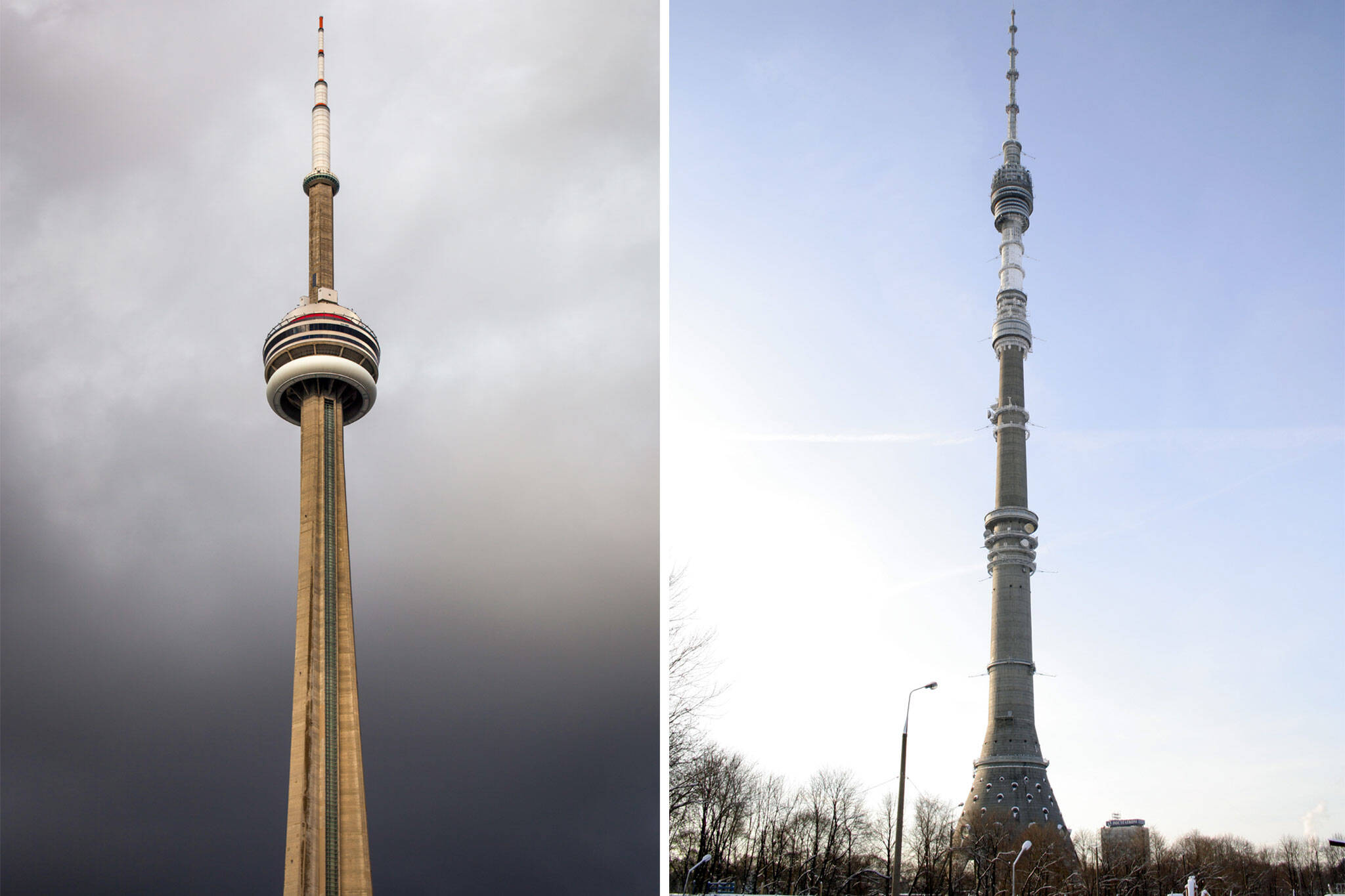
That time Moscow and Toronto had a petty fight over the world's tallest structure
The Cold War's biggest pissing contest may have been the nuclear arms race between the United States and the Soviet Union that threatened to turn the planet to ash, with the space race also in the running. But a less-discussed Cold War battle was the ego-driven quest to build the world's tallest structure, and one-half of that fight played out right here in Toronto.
The 1960s was a high-stakes decade for the ideological showdown between capitalism and communism, and as American and Soviet scientists fought to one-up the other nation on nuclear arms and space travel, engineers and architects were fighting their own lower-stakes campaign for the skies.
For much of the early Cold War, New York City's Empire State Building held the title of the world's tallest building, a record that stood for four decades from 1931 to 1971.
Soviet leadership, unwilling to be outdone by what they considered an inferior political system, set out to construct something even taller in their empire's capital of Moscow.
Some of the greatest Soviet architects and engineers contributed to the design of a record-breaking tower, which would easily dwarf the competition, but was ostensibly conceived to mark the 50th anniversary of the October Revolution rather than put western powers in their place.
Designed by Nikolai Nikitin, Pyotr Gorchakov and Yuri Kondratyuk, the Ostankino Tower — named for the surrounding district of Moscow — was a feat of engineering for its era, using pre-stressed reinforced concrete to rise just over 540 metres over a four-year period from 1963-67.
The completed tower claimed the title of the world's tallest freestanding structure, giving the Kremlin a huge propaganda win over the West, and allowing state-controlled television and radio broadcasts to further tighten the state's grip on the masses.
But Moscow's win over the West didn't last long, and it only took the West nine years to reclaim the title of world's tallest freestanding structure. But as many Canadians know, that title wasn't reclaimed by New York or Chicago.
No, it would be Toronto that silenced Soviet claims of engineering supremacy with the construction of our iconic CN Tower in 1976.
Discover how #Toronto got the CN Tower https://t.co/AJVU69MpzQ pic.twitter.com/CUjG9uUMYm
— blogTO (@blogTO) July 2, 2017
The CN Tower topped out 13 metres taller than the Ostankino Tower, claiming its title of the world's tallest freestanding structure. Not that I can suggest a connection between the two events, but the Soviet Union dissolved just 15 years later.
Despite the fall of the Soviet Union in 1991, the successor state in the Russian Federation made an attempt to take back its title in an ill-fated plan during the chaotic Yeltsin era.
In 1994, plans were discussed to increase the height of the Ostankino Tower to 561 metres with the addition of an antenna, but the plan never materialized due to a lack of funding, leaving Moscow's concrete giant as a footnote in the record books.
Decades after both landmarks were built, the CN Tower has slipped from first all the way down to tenth tallest freestanding structure on Earth, while the Ostankino Tower has dropped down to 12th place.
Both remain the tallest freestanding structures on their own continent, a far cry from the distinction of world's-tallest they once claimed.
Jack Landau/Andrey Belenko
Latest Videos
Latest Videos
Join the conversation Load comments







